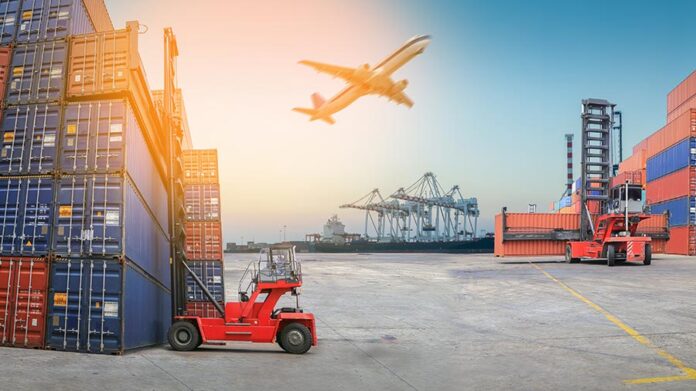Forwarders can help both shippers and carriers. Smaller businesses may struggle to cover the costs and fees of freight forwarders, as well as improving the end to end supply chain visibility. Freight forwarding rates, like everything else in the shipping and transportation industry, fluctuate over time.
As more and more business is done online, the demand for dependable freight forwarding companies has increased. Even simple questions like “How much does a freight forwarder charge?” are becoming more difficult to answer due to the pressure to ship things quickly, cheaply, and reliably.

Fundamental Influences of Freight Forwarder Fees
The shipping industry shares the public’s concern about the fees supply chain visibility software charge and how difficult it is to keep costs under control. It’s critical to understand what factors influence freight forwarder rates at any given time.
There are five factors that can affect the price:
- l Traveling by land or sea is more expensive than traveling by air.
- l When cargo has to travel farther, it consumes more fuel, raising the price.
- l The price is determined by the amount and size of the shipment.
- l Price and risk are affected by value.
- l Short-term and long-term forwarder contracts can have an impact on costs.
Shippers and forwarders can make better decisions if they understand the factors that influence the cost of ocean end to end supply chain visibility.
Shipping costs can be calculated by weight or by how much each pallet costs (more on that later). Most shipping companies charge an additional fee for long-distance shipments. To account for the fluctuating price of gasoline, a fuel surcharge and other fees are added.
Bunker alterations (BAF). The fuel for ships is stored in bunkers. When the price of fuel fluctuates around the world, shipping companies must adjust their BAF fees to keep up.
Global maritime and port safety (ISPS). The International Ship and Port Facility Security Code is a global safety standard for ships and ports. Countries can thus monitor port shipping operations for potential security threats. Because of the stringent security measures, shipping companies must hire people with extensive training. To cover the additional costs, they could charge an ISPS fee.
People can pay for international shipping costs in US dollars, Euros, or British pounds. The shipping industry sometimes charges a fee to compensate for money lost due to the volatility of these currencies.
The price of a hotel room (OCC). When the first option isn’t available, OCC stands for the cost of the second option. outside of, say, a major transportation hub Things that happen after a port or terminal but before a city.
Charge for the vehicle’s frame (CUS). The cost of transporting goods from the shipper’s factory to the port is high because a chassis and a shipping container are required.
Airport fees (THC). Costs associated with cargo handling at a specific international terminal.
A “documentation fee” is the cost of processing important paperwork such as a Certificate of Origin, booking confirmation, Material Safety Data Sheet, and so on.

Additional Freight Forwarder Costs and Charges
Freight forwarding costs vary according to the complexity of the shipment. This includes the following items:
- l Gases, corrosives, and flammables pose a high risk of injury or property damage when being moved.
- l as well as fresh and frozen food and live animals
- l Things that can’t be moved by regular cars or trucks
- l More shipments requiring special packaging, equipment, or cranes
You can estimate the cost of ocean shipment visibility forwarding by considering the type of cargo being sent, the distance it must travel, and whether it requires any special handling. Shipping costs vary depending on the service provider and the contract. Freight companies and shippers may charge additional fees to transport these items.
Freight Forwarding Charges in 2022
COVID impacts freight forwarding services. Freight forwarding costs are expected to rise and become highly unpredictable in 2022. According to National Review, 64% of importers had to raise their prices due to fluctuating end to end visibility supply chain forward costs.
Freight forwarder costs will continue to fluctuate in response to consumer preferences and market trends, increasing demand for technology that facilitates freight consolidation. According to the review, “pre-pandemic, ocean shipping costs per unit for smaller items ranged from $0.30 to $0.40, or about half the sticker price.”
Rising gas (and transportation) prices have an impact.
For the past seven years, crude oil and natural gas prices have been rising. Many businesses lose money as a result of supply chain inconsistencies. In just one year, the cost of a bunker increased by 74%. Despite the fact that sending empty fuel tanks saves money, they are useless in an emergency (not to mention the chip crunch). Gather relevant data to determine the most efficient transportation routes.

Ship Movements Expected in 2022
Freight rates will level off in 2022, though they will not be as low as they were in 2019, making logistics visibility planning much easier. In the year 2022, it is possible that:
- l Shipping delays are caused by the Chinese New Year.
- l extra input/output (I/O) ports
- l Congestions
- l greater cargo space available for rent
- l Short-handed
- l ships
- l Fuel price increases are unavoidable.
Using Technology Helps Freight Management Parties Keep Costs in Check to Maximize Profitability
With the current price range of ocean cargo freight forwarders, shipping companies and transportation service providers are finding it difficult to maintain global freight visibility and innovation. In volatile markets, freight forwarding fees and costs can be difficult to predict.
Consulting with industry experts and selecting the right ocean freight partner can help shippers and freight forwarders improve communication and efficiency.





![Calgary’s Hottest Neighborhoods for Luxury Homebuyers [2024]](https://thewashingtonote.com/wp-content/uploads/2024/04/Calgary-324x160.png)



